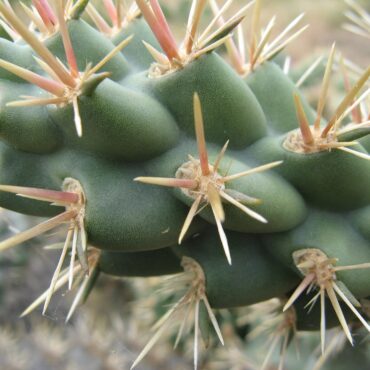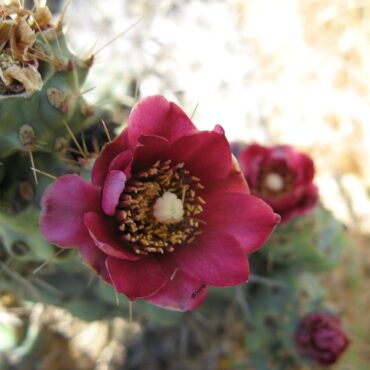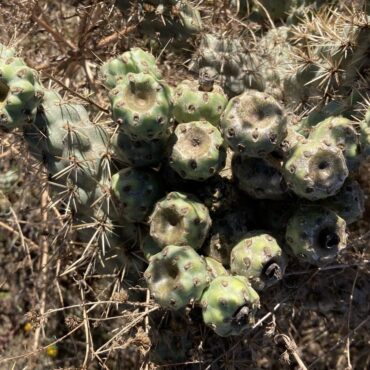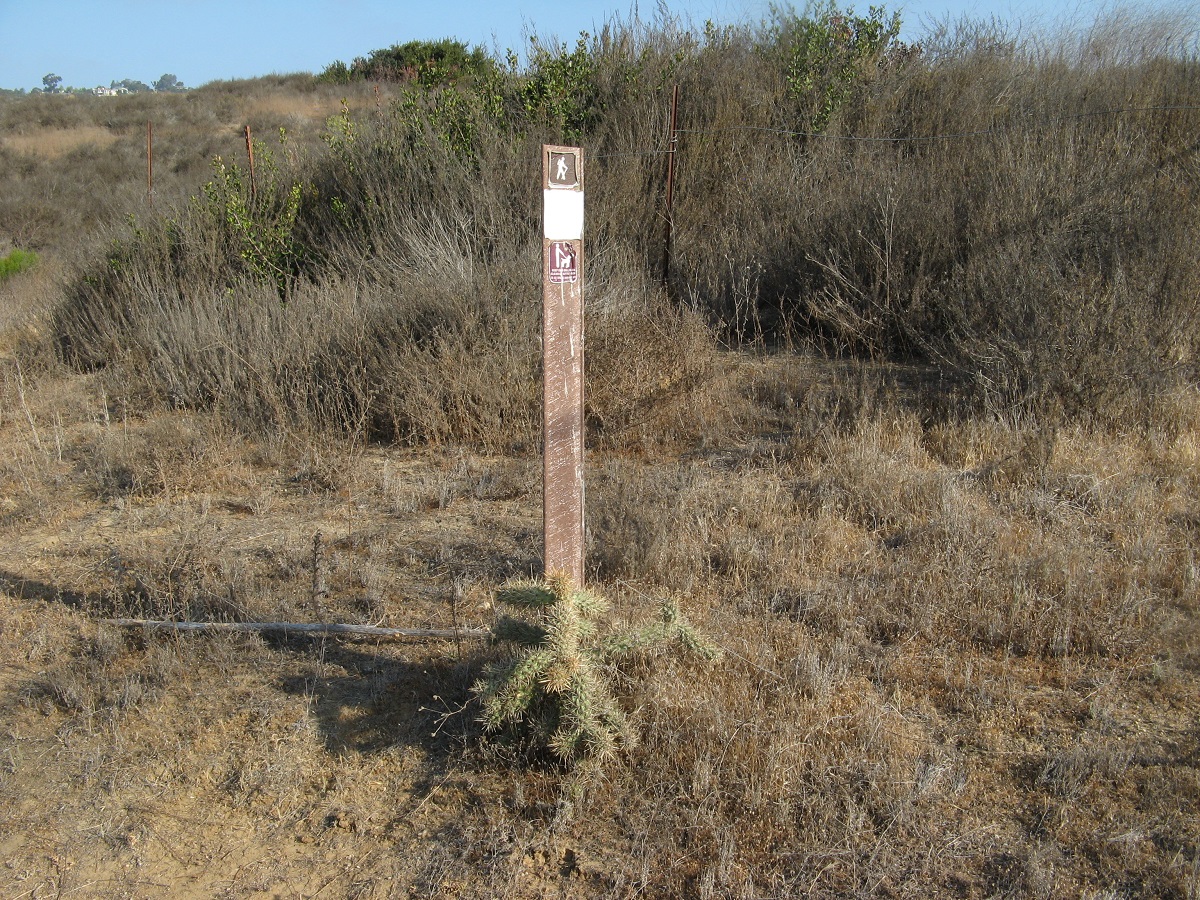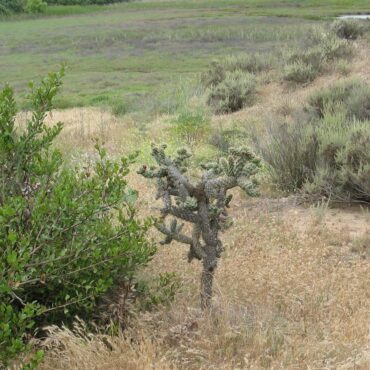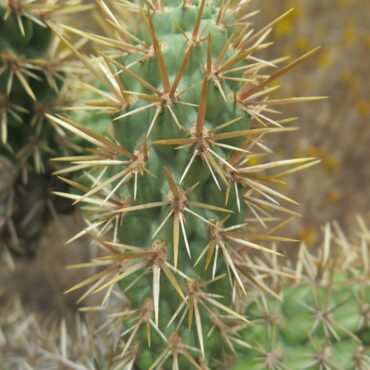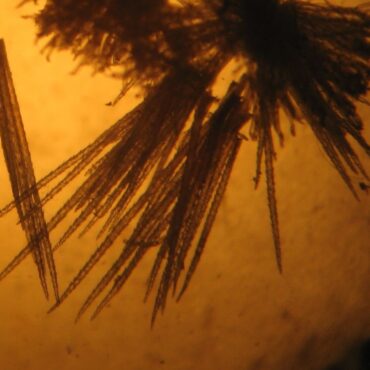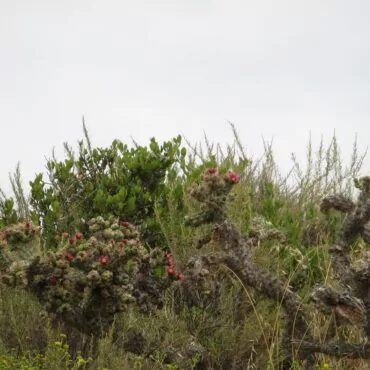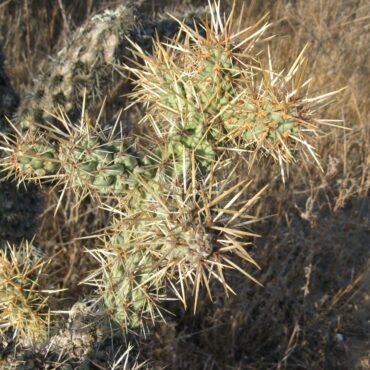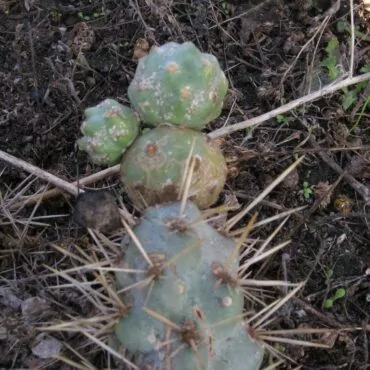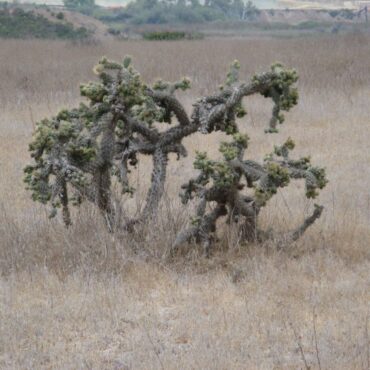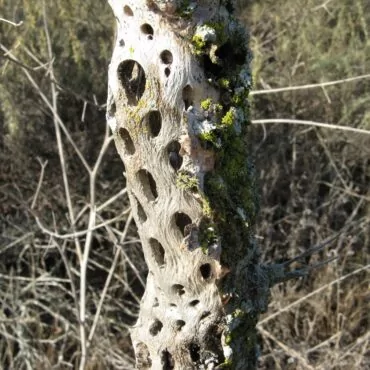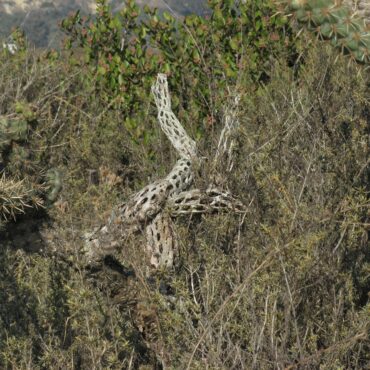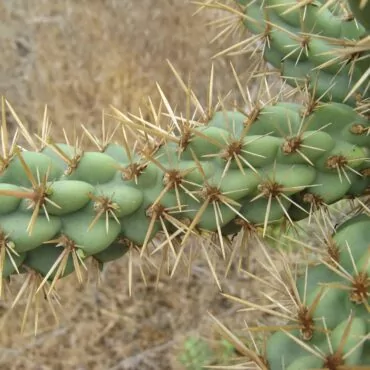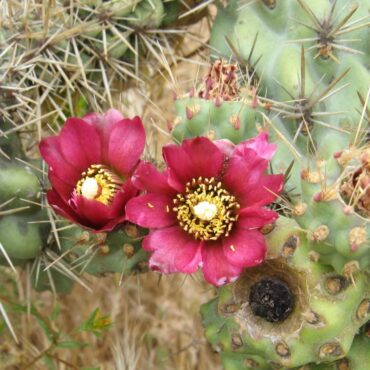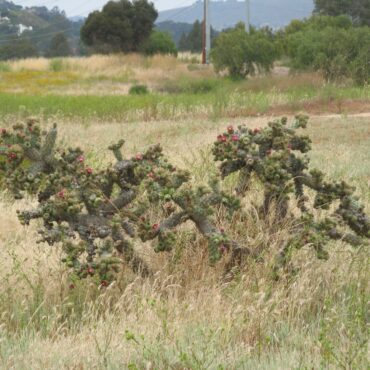Coast cholla is a succulent plant, technically a shrub, up to 6-7 feet (2 m) high and often wider than high. One to several basal stems are ascending to erect and irregularly branched. The green outer stems are composed of cylindrical-sausage-shaped segments (joints) that are strongly constricted between segments. These segments are usually less than 12 inches (39 cm) long and 1.5 inches (4.3 cm) in diameter. The older stems are woody and lack conspicuous constrictions. Cholla surfaces are “bumpy” with helically arranged, oval elevations called tubercles. Atop each tubercle is an “areole”, a highly modified bud that produces a cluster of spines. An areole may also produce a leaf, a flower and fruit or roots. Leaves are small, conical and short-lived.
Spines are of two types. There are five to twelve strong spines of various lengths, usually less than 1.5 inches (4.3 cm) in length, radiating outward. At their base is a small clump of tiny spines, “glochids”, < 0.10 inch (0.25 cm) long. The longer spines are barbless and strongly attached to the cactus pad. In contrast, the tiny glochids are armed with numerous barbs and are easily detached, often in clumps. The glochids are clinging, irritating spines that easily penetrate the skin and are difficult to remove.
Conspicuous magenta flowers are sessile, usually less than 1.5 inches (4.3 cm) across, clustered at the tops of terminal segments. Flowers last one day. Sepals and petals are indistinguishable, collectively called tepals. Stamens are numerous, filaments grade from green to yellowish, turning magenta with age; Anthers and pollen are yellow. The single pistil has an inferior ovary and one inverse-club-shaped style with usually, four pale greenish, stigmas exserted beyond anthers. Stamens are sensitive to touch and tilt inward when brushed. Major bloom period is late April through June.468
Flowers, and later fruits, may be produced from areoles of terminal segments or areoles of old fruit, leading to short lengths of two to five “chained” fruit. The fruit is a succulent, green sphere, with a flattened top covered with bark-like skin. Fruits bear tufts of glochids, but the long spines are generally fewer than on the stems, or they are lacking completely. The fruit of coast cholla is either seedless 59, 399 or produces seeds uncommonly. 96, 554


